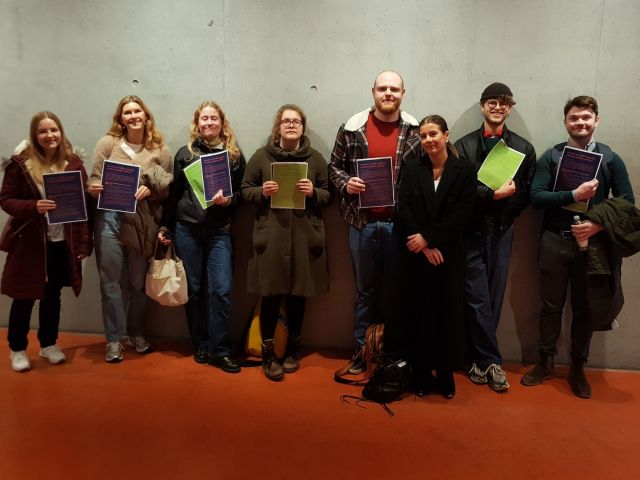The risk of layoffs resulting from program closures could be minimal, claims General Consultation Committee member

(Photo by Anna Holte)
The General Consultation Committee (HSU) has met with Senior Management about the proposed plan to close six programs. Ole Helmersen, HSU member, explains that alternative implementations of the two phases were discussed, and that he believes that the risk of layoffs can be reduced.
On Tuesday November 16, the General Consultation Committee (HSU) met with the Senior Management for the first of two hearings on the proposed study place reduction plan.
Ole Helmersen, Associate Professor and HSU member, explains that the staff-related and organizational consequences of the proposed plan are what concern HSU, rather than the academic discussions revolving around whether it is a good idea to close the six programs.
“If this plan is carried out, we may begin to see staff-related consequences come over a three-year period starting in 2023. And as it is now, the adjustments can be implemented over several years, which potentially makes the risk of layoffs minimal,” he says and continues:
“In the draft plan presented to CBS’ Board last week, which is now discussed across CBS, Senior Management points out that it cannot rule out that there may be staff-related consequences. But as the plan will not begin to take effect until 2023, there is probably time to absorb most of these within the organization.”
In addition to focusing on the potential organizational consequences, HSU invited Senior Management to reconsider the composition of the two-phase model, explains Ole Helmersen.
The plan covers two phases. The first includes the closure of six programs and a reduction of 334 study places. This phase will be implemented starting from the summer of 2023. In the second phase, CBS has to cut an additional 294 study places starting from 2025. However, the CBS Board of Directors has recommended that CBS does not concretize the plans for how to find the additional study places until later.
“The plan proposes a two-phase implementation, but rather than closing programs right away, we discussed whether the Senior Management could wait to make that decision, and instead consider other options of cutting the intake across several programs instead,” says Ole Helmersen and continues:
“But we are well aware that there’s a significant financial difference according to whether you choose one model over another. And the bigger the expenses, the bigger the risk for negative consequences for staff members.”
High expenses – higher risk of layoffs
In the Senior Management’s plan, the financial consequences of two models ‘study specific’ and ‘combine harvester’ are lined up.
The study-specific model proposes closing entire programs, whereas the ‘combine harvester’ model proposes reducing the intake of all programs in proportion to their intakes.
According to the plan, the reduction of income is about the same with both models, however, the deflected cost cuttings vary significantly.
For the study-specific model, the cost savings run into about DKK 30 million and can be subtracted from the loss in income, DKK – 45 million, leaving a result of about DKK -15 million. The result after the subtraction for the ‘combine harvester’ model is close to DKK -33.5 million.
All in all, CBS’ Senior Management expects it will cost CBS about DKK 45-55 million a year to reduce its intake by 10%, according to the plan.
“DKK 45–50 million in lost income is a lot, and it is something we have to be attentive to. We want to create solutions that can minimize the trenchancy of the lost income. Although, CBS’ finances are stable and we have substantial equity, 45 – 55 millions per year is a sizeable amount,” says Ole Helmersen.




































































































































Comments